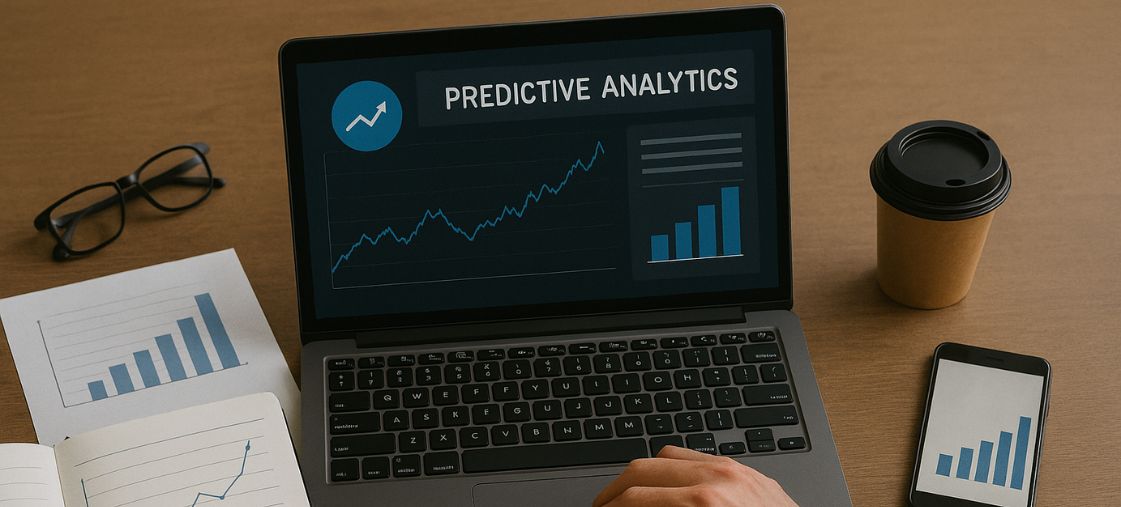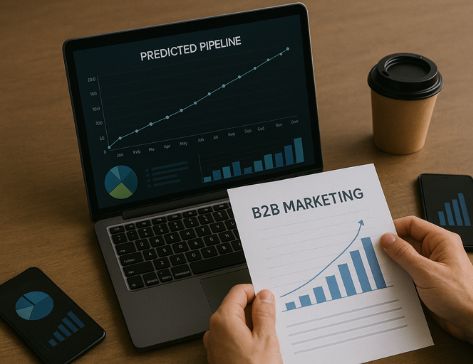
Predictive Analytics for B2B Marketing: A Practical Guide to Pipeline Growth
Predictive analytics for B2B marketing is the most reliable way modern revenue teams anticipate demand, prioritize high‑propensity accounts, and turn data into pipeline growth. Rather than relying on intuition or last‑click reporting, predictive methods combine first‑party intent, behavioral signals, and firmographic context to forecast which buyers are ready to engage and which tactics will move them forward.
For GTM leaders, the payoff is tangible: higher conversion rates, lower CAC, and faster sales cycles—especially when predictions are operationalized inside your MAP and CRM. A recent overview of enterprise marketing trends underscores how predictive scoring and intent signals are becoming core to budget allocation, account selection, and creative testing across channels.

What Exactly Is Predictive Analytics in B2B?
In B2B, predictive analytics applies statistical modeling and machine learning to historical and real‑time data to estimate future outcomes such as lead conversion, revenue potential, churn risk, and next best action. Think of it as a calibrated way to answer questions like: Which accounts are most likely to book a meeting this month? Which content offer will convert this specific buying committee persona? Which channel will produce incremental pipeline at the margin?
Building a modern marketing technology stack that supports this approach requires clear goals, quality data, and disciplined processes. If you are constructing the foundation, this step‑by‑step playbook for marketing technology is a helpful frame for sequencing capabilities, integrations, and governance so your predictions can be activated where people work.
Why It Matters for Revenue Teams
B2B buying is complex: long cycles, multiple stakeholders, and sparse conversion moments. Predictive models cut through that noise by:
- Turning raw intent and engagement into a single relevance score that SDRs can act on.
- Quantifying account fit and timing so marketing prioritizes segments with the best marginal returns.
- Surfacing next best action recommendations that personalize offers, channels, and timing.
- Revealing which programs truly drive incremental pipeline, not just attributed touches.
The result is tighter alignment between marketing and sales: fewer low‑quality handoffs, more precision in messaging, and cleaner feedback loops to improve models each month.
Data Foundations: What You Need Before You Predict
Predictive systems are only as good as the data behind them. Before building models, invest in four foundations:
- Unified Identity Graph. Resolve people and accounts across channels and devices. Map contacts to parent accounts and buying groups.
- Event & Intent Taxonomy. Normalize web, email, content, ad, and offline events. Tag high‑intent milestones consistently.
- Enrichment & Firmographics. Append industry, size, technologies used, and growth indicators to accounts and leads.
- Reliable Outcomes. Define what constitutes MQA, SQL, SAO, and Closed‑Won—then backfill labels for at least 12–18 months.
With those assets in place, feature engineering becomes far more effective—aggregating session patterns, recency/frequency, engagement by persona, and interactions across the buying committee.
A Step‑by‑Step Implementation Roadmap
- Clarify business questions. Example: “Which in‑market accounts deserve 2x SDR attention this quarter?” Write down hypotheses you want the model to test.
- Assemble and clean the data. Consolidate MAP, CRM, web analytics, ad platforms, product usage, and third‑party intent. De‑duplicate, fill missing values, and establish time windows for labels.
- Engineer features that reflect buying behavior. Build rolling aggregates (7/30/90‑day), persona‑specific engagement, seniority weights, recency scores, and journey stage markers.
- Select initial models and baselines. Start simple (logistic regression, gradient boosting) with strong baselines (heuristic rules, manual MQL criteria) to quantify lift.
- Validate with proper splits and diagnostics. Use time‑based splits to avoid leakage. Track AUC/ROC, PR‑AUC, calibration, and lift charts at key operating points.
- Operationalize in workflows. Push scores and explanations into lead routing, account tiers, ad audiences, email triggers, and SDR task queues.
- Run controlled experiments. Hold‑out segments or geo tests to estimate incremental impact on meetings booked, pipeline, and revenue.
- Monitor drift and retrain. Set alerts for feature drift, win‑rate changes, and score distribution shifts. Retrain on a monthly or quarterly cadence depending on volume.
High‑Impact Use Cases
1) Predictive Lead and Account Scoring
Replace binary MQL rules with calibrated scores that combine fit and intent. Route Tier‑A accounts directly to senior SDRs, while Tier‑B accounts receive nurture streams tuned to their predicted conversion window.
2) Churn and Expansion Signals
For existing customers, identify early warning signs of churn (declining usage, fewer admins, sentiment dips) and recommend expansion plays (new product modules, seats, or cross‑sell) based on look‑alike behavior.
3) Next Best Action & Content Recommendations
Personalize content sequences using probabilities by persona and stage—e.g., CFOs receive ROI tools and case studies, while practitioners see implementation guides—so each touch earns its place.
4) Pipeline Forecasting
Move beyond static coverage ratios. Predict the likelihood and timing of opportunities converting by stage, then guide budget reallocation toward programs with the highest expected pipeline yield.
Tips and Best Practices
- Start with one use case. Lead scoring or in‑market account detection are ideal entry points with quick payback.
- Favor interpretability. Use feature importance, SHAP values, and simple explanations so sellers trust and adopt the guidance.
- Close the loop. Capture SDR dispositions and campaign responses as training signals to continuously improve.
- Respect the buying committee. Aggregate signals across multiple contacts; individual behavior rarely tells the whole story in B2B.
- Measure marginal gain. Compare to baselines and isolate incremental lift with controlled tests.
- Document governance. Track data lineage, consent, retention periods, and model versioning to reduce risk.
Tools and Integration Patterns
You don’t need a perfect stack to start. Many teams begin by exporting labeled datasets from their MAP/CRM, training models in a notebook environment, and pushing scores back as custom fields. As you mature, consider reverse‑ETL into activation tools, server‑side event collection, and a feature store to standardize definitions across teams.
The key is minimizing friction for end users. Put scores next to the account record, add explanations in the call task, and automate playbooks that trigger when thresholds are met. When the experience feels native, adoption follows.
Common Pitfalls (and How to Avoid Them)
- Leaky labels. Using future information (like post‑MQL touches) to predict the MQL will inflate offline metrics and disappoint in production. Use time‑aware splits.
- Blind to seasonality. Re‑train on fresh data or include calendar effects so Q4 behavior doesn’t mislead Q1 tactics.
- Over‑indexing on vanity metrics. High AUC is nice; business lift is better. Always tie model success to incremental meetings and pipeline.
- One‑size‑fits‑all thresholds. Different segments merit different cutoffs. Calibrate operating points by region, product, and ACV band.
How to Prove ROI
Define success upfront: target increases in meeting rate, SQO rate, and pipeline velocity. Run A/B or geo‑split tests comparing predictive‑driven plays to business‑as‑usual, and measure the incremental change. Pair that with operational metrics—like SLA adherence and time‑to‑first‑touch—to show how predictions improve execution quality.
Conclusion
Predictive analytics for B2B marketing works best when it is practical, transparent, and embedded in daily workflows. Start small with a high‑impact use case, prove lift, and scale your way toward a connected system where every touch is informed by data. For competitive landscape research and creative inspiration that fuels your experiments, consider exploring ad intelligence tools to see how top performers structure offers and funnels—then let your predictions guide where to focus next.


